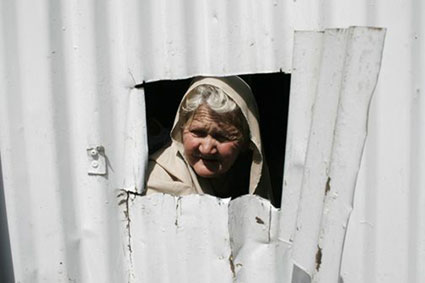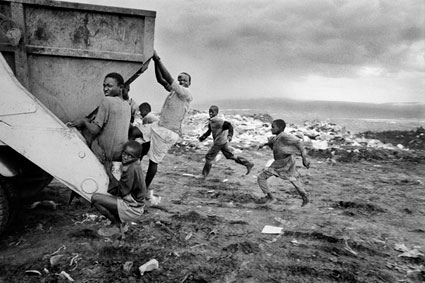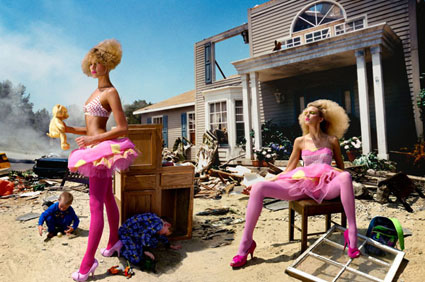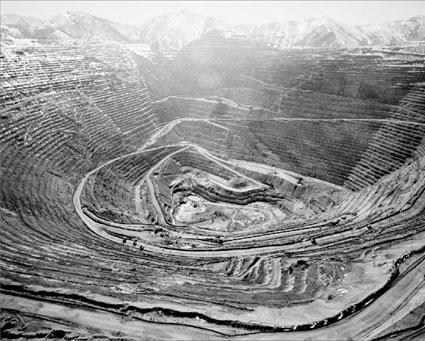Recently I saw an eclectic combination of photographers speaking about photography at the Doubletree Hotel in Santa Monica for this year’s 19th Annual Photo LA. It was a day of lectures curated by LACMA, and the photographers who spoke were Michael Light, Colin Finlay, Sara Terry, and David LaChapelle. It was a day that took me from the firmament to terrestrial realities to celebrity surrealities.

"Earth’s Largest Excavation, 2.5 Miles Wide and .5 Mile Deep, Looking West," photograph by Michael Light
Michael Light flies a “very tiny aircraft in very large spaces” seeking the sublime. He produces very large handmade books of the results he finds, which are also reproduced as trade editions for the everyday monograph consumer. By flying through the atmosphere, Light is bathing in vision—the wide angle, the distance, and the air thick with light. He has a self-proclaimed taste for the grandiose and is quick to point out the happy coincidence that he was born with the name Light and is primarily interested in finding and making images of the stuff.

A woman peers through an opening in the gate that leads into Rabia Balkhi Women's Hospital, the second busiest maternity hospital in Kabul, photograph by Sara Terry
Photojournalists Sara Terry and Colin Finlay were on hand to speak about their involvement in the book A Thousand Words: Photographs from the Field, which documents twenty-five years of the International Medical Corps, an international relief agency that not only specializes in delivering medical services to areas of the world most in need but also strives to set up infrastructures to sustain that relief.
Formerly an award-winning reporter in print, radio, and television, Terry lost faith in words when they failed her at a key time in her personal life. Around that time she also picked up a camera and started taking photographs. She hasn’t turned back, focusing her lens on places like Bosnia, Afghanistan and, more recently, rural California. She’s also the founder of the Aftermath Project, which makes grants to help societies rebuild after major political upheaval. With photography, this wordsmith has incorporated images into a most effective form of language.

Children in Rwanda, photograph by Colin Finlay
Colin Finlay used the word “alchemy” when he spoke about photographing. In order to achieve the soul agreement that has to happen between him as a photographer and the person in front of his camera, he has to be completely raw and compassionate to receive the image of his subject. To Finlay, photographs are given, not “taken.” It’s all about how the subject sees him, not the other way around.

Photograph by David LaChapelle
David LaChapelle has traversed the worlds of commercial and art photography, music videos, and filmmaking. It was this campaign, above, shot in the first half of 2005 and published shortly after Katrina hit in July, which led LaChapelle to drop his allegiance to advertising photography for a couple of years and move to Hawaii to build an organic farm. Needless to say, some viewers mistakenly saw this fashion-in-a-hurricane theme as deliberate and in poor taste (although it was photographed months before the destruction in New Orleans). LaChapelle, having worked nonstop for twenty years, seized this moment to shift course. It seems to have brought him back to focusing on the fine art side of his work.
If you’re a photographer, where do set up your camera? What’s your perspective?



